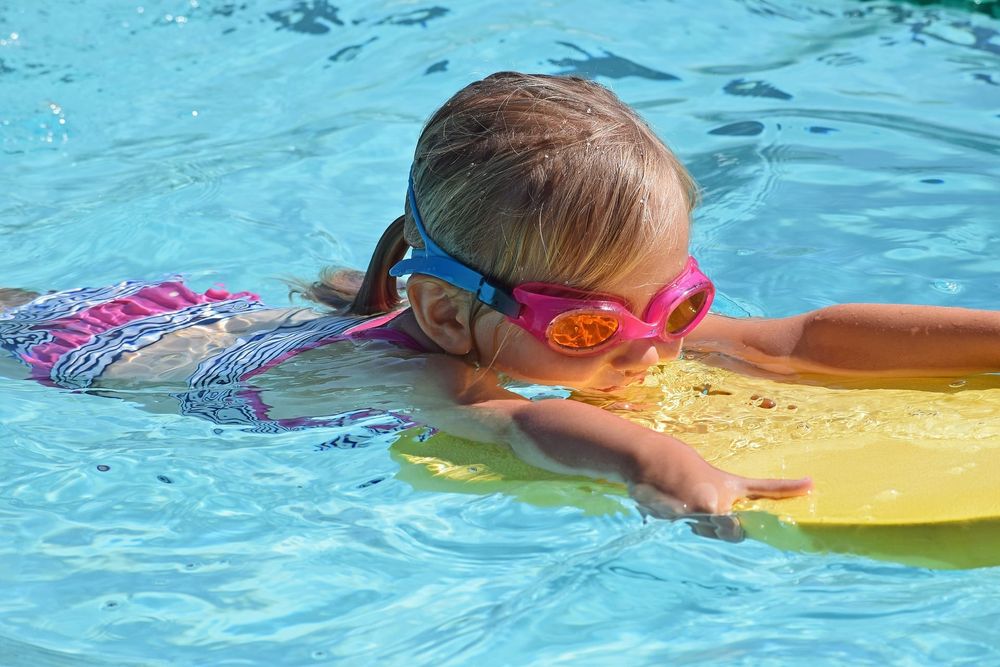Kids Alive - Do the Five
Published on Tuesday, 28 May 2019
Last updated on Thursday, 01 October 2020

This editorial was written by Emma Lawrence from the Kids Alive Do The Five Drowning Prevention Campaign for preschool-aged children, which was founded by former Olympic swimming coach Laurie Lawrence.
When the Kids Alive – Do the Five, drowning prevention program launched nationally in the year 2000, statistics revealed that 63 children under the age five drowned in Australia. Alarmingly for every drowning death, a further 3-4 children were admitted to hospital following a non-fatal drowning, leaving many children with lifelong disabilities.
Former Olympic Swimming Coach turned water safety advocate Laurie Lawrence, who was operating a water safety program in Queensland at the time, said these statistics prompted him to take action at the national level.
While the most recent Royal Life Saving report reveals that statistics have reduced significantly with 18 drowning deaths in the under 5 age group in 2017/18, Laurie says these numbers should be lower, which was his motivation to start the Kids Alive Program.
Laurie's positive and proactive campaign has a musical focus, with a catchy water safety jingle that children love to sing:
"Fence the pool, shut the gate, teach your kids to swim – it's great, supervise – watch your mate and learn how to resuscitate. This message saves lives," said Laurie.
While Laurie advocates swimming lessons for babies and children he says lessons alone will not reduce drowning statistics and this is where early learning services come into the picture.
"Water safety education doesn't just happen at swim schools. Water safety is an ideal topic for early childhood teachers to incorporate into their programs," he says.
Laurie insists that even though the majority of early childhood educators aren't taking children to the pool, the lessons they deliver still play a vital role in water safety education and saving lives.
"We know that children learn through play and exploration and establishing safe attitudes and behaviours early could save their life," he says.
To help make water safety easy to incorporate into early learning settings the Kids Alive team enlisted the support of teachers from Bright Buttons Kindergarten at Currumbin to develop lesson plans that link to the National Quality Standards and the Early Years Learning Framework.
Once the lesson plans were established, they bought in a production crew and filmed the children participating in the lessons over a 4-week period.
"Early learning must be fun and engaging for children. So, I enlisted the help of brilliant early childhood teachers to help me create lesson plans for home, pool, farm and beach water safety. It's ideal for teachers to learn from their peers and see first-hand how the children are enjoying the lessons," says Laurie.
Early childhood educators can access the free training program online as well as educational resources such as music, books and animations designed specifically to reinforce the water safety message in children under five.
The Kids Alive – Do The Five program receives funding from the Australian Government to produce and distribute a free water safety pack for early learners and the resources were developed in consultation with an expert advisory panel lead by Professor Robyn Jorgensen.
"Leading industry professionals helped us develop the resources, so they were appropriate for inclusion in the early years learning setting. I wanted to create something that was used and loved by both the teachers and children, " says Laurie.
The resources have received fantastic support from the early learning industry and Professor Robyn Jorgensen from Canberra University evaluated the resources and found that.
- 96 per cent of respondents thought the resources were worthwhile
- 97 per cent of respondents supported the continuation of the water safety resources
- 86 per cent of respondents indicated that they had communicated with parents on water safety with a further 11 per cent planning to do so
- 77 per cent of respondents indicated the resources were useful or very useful in engaging learners
- Almost half (48 per cent) of the respondents indicated they used the books often or frequently suggesting that they books are of great value to the teachers
- And the interviews also found the water safety message was being heard by the children with 93 per cent indicating the children were learning the message
While the resources received a big thumbs up from early childhood teachers Laurie said it was because of this research that they developed the online training package.
"It was clear that the teachers and children loved the resources. But the research revealed that the teachers wanted a professional development package to help them deliver water safety to the children. Our online training was released at the end of 2018 and so far over 1,000 educators have signed up.
Learn more and access the professional development training via the Kids Alive website.
Related Articles

National Principles for Child Safe Organisations
The National Principles for Child Safe Organisations have been endorsed by government and what this means for providers.
